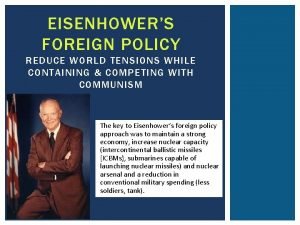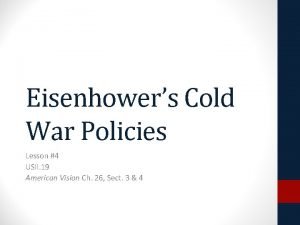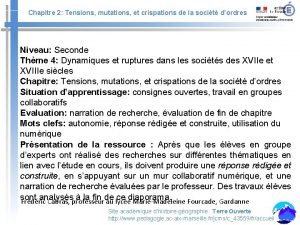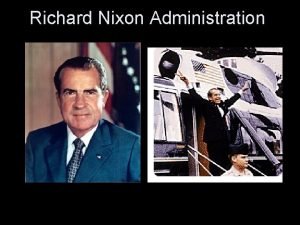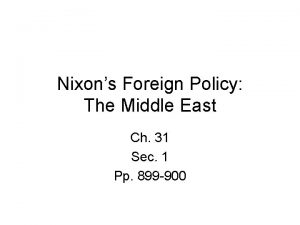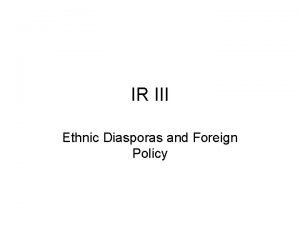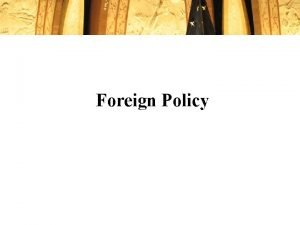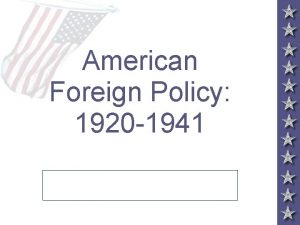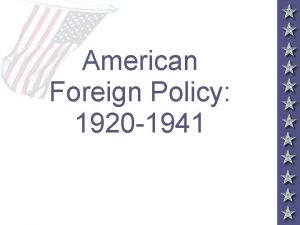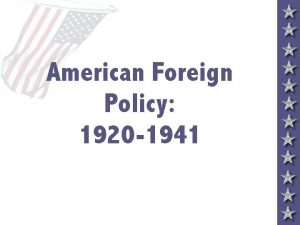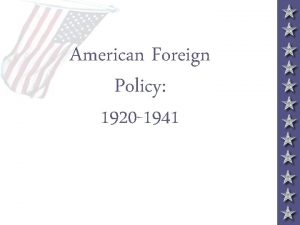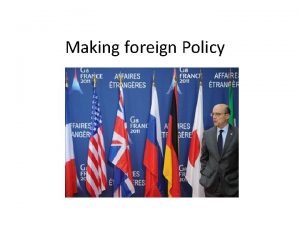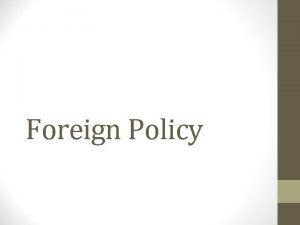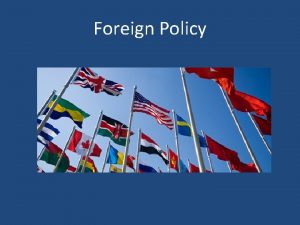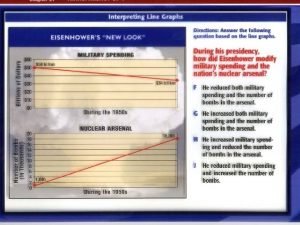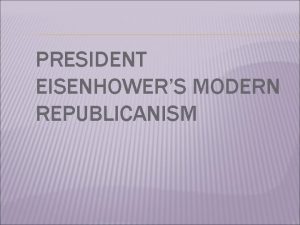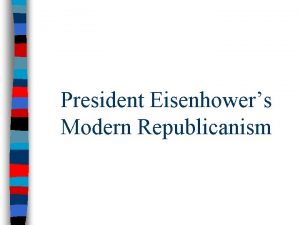EISENHOWERS FOREIGN POLICY REDUCE WORLD TENSIONS WHILE CONTAINING












- Slides: 12

EISENHOWER’S FOREIGN POLICY REDUCE WORLD TENSIONS WHILE CONTAINING & COMPETING WITH COMMUNISM The key to Eisenhower’s foreign policy approach was to maintain a strong economy, increase nuclear capacity (intercontinental ballistic missiles [ICBMs}, submarines capable of launching nuclear missiles) and nuclear arsenal and a reduction in conventional military spending (less soldiers, tank).


EISENHOWER’S “NEW LOOK” “MORE BANG FOR THE BUCK” Strong economy & strong military Conventional war too costly/damage eco use of nuclear weapons § New technology: B-52 bomber, intercontinental ballistic missiles, subs capable of launching nuclear missiles MASSIVE RETALIATION Policy called massive retaliation was used to threaten the use of nuclear weapons on any Communist state that tried to gain territory through force to prevent war § § Cut in military spending Increase in US nuclear arsenal


THE SPUTNIK CRISIS On October 4, 1957, the Soviets launched Sputnik, the first artificial satellite to orbit the earth Americans felt they were falling behind in missile technology. In response, Congress created the National Aeronautics and Space Administration (NASA) & passed the National Defense Education Act (NDEA). in order to improve our educational and technological capacity to beat the Soviets.

BRINKMANSHIP Eisenhower’s willingness to threaten nuclear war to maintain peace worried some people Critics argued that brinkmanship, the willingness to go to war to force the other side to back down, was too dangerous. • The Korean War ended with the signing of an armistice in 1953 after Eisenhower had gone to the brink & threatened to use nuclear weapons stopped communism from spreading (remained above 38 t h Parallel).

BRINKMANSHIP IN ACTION THE TAIWAN CRISIS 1954 China threatened to take over 2 of the islands from the Nationalists in Taiwan • Eisenhower threatened the use of nuclear weapons if China tried to invade Taiwan. • China retreated. THE SUEZ CRISIS US offers to pay for dam construction on Nile River for Egypt (prevent Arab nations from turning to USSR) Congress withdraws offer Egyptians take control Suez Canal GB & Fr invade Canal USSR threatens rocket attacks on GB/FR US pressures GB/FR to call off invasion


CONTAINMENT IN DEVELOPING NATIONS Brinkmanship would not work in all situations, & it could not prevent Communists from revolting within countries Eisenhower used covert, or hidden, operations conducted by the Central Intelligence Agency (CIA). • The CIA operations took place in developing nations, or those nations with mostly agricultural economies. Operations involved influencing the overthrow of Communist-leaning leaders, training anti-Communist rebels to overthrow Communist leaders, &, more extremely, plotting/executing the assassination of Communist leaders.

U-2 SPY PLANE INCIDENT 1953 Stalin dies power struggle 1956 Nikita Khrushchev leader of USSR Eisenhower and Soviet leader Khrushchev agreed to a summit in Paris in order to improve relations Khrushchev stopped the summit after the Soviets shot down an American spy plane piloted by Francis Gary Powers. In his farewell address, Eisenhower warned Americans to be on guard against the influence of a military-industrial complex in a democracy. = new relationship between the military establishment & the defense industry

IKE & WAR IN VIETNAM Eisenhower defended U. S. policy in Vietnam with the domino theory = belief that if Vietnam fell to communism, other nations in Southeast Asia would do the same. He created the South East Asian Treaty Organization (SEATO) to give mutual military assistance to member nations & support anticommunist Diem’s failing regime in South Vietnam.

 Eisenhowers foreign policy
Eisenhowers foreign policy Lesson 4 eisenhower's cold war policies
Lesson 4 eisenhower's cold war policies Dwight d eisenhower domestic policy
Dwight d eisenhower domestic policy Too foreign for home too foreign for here
Too foreign for home too foreign for here Tensions mutations et crispations de la société d'ordres
Tensions mutations et crispations de la société d'ordres Who made it
Who made it 1790 foreign policy
1790 foreign policy Foreign policy of louis philippe
Foreign policy of louis philippe What was thomas jefferson foreign policy
What was thomas jefferson foreign policy Nixons foreign policy
Nixons foreign policy Nixons foreign policy
Nixons foreign policy Actors in foreign policy
Actors in foreign policy Definition of foreign policy by scholars
Definition of foreign policy by scholars
